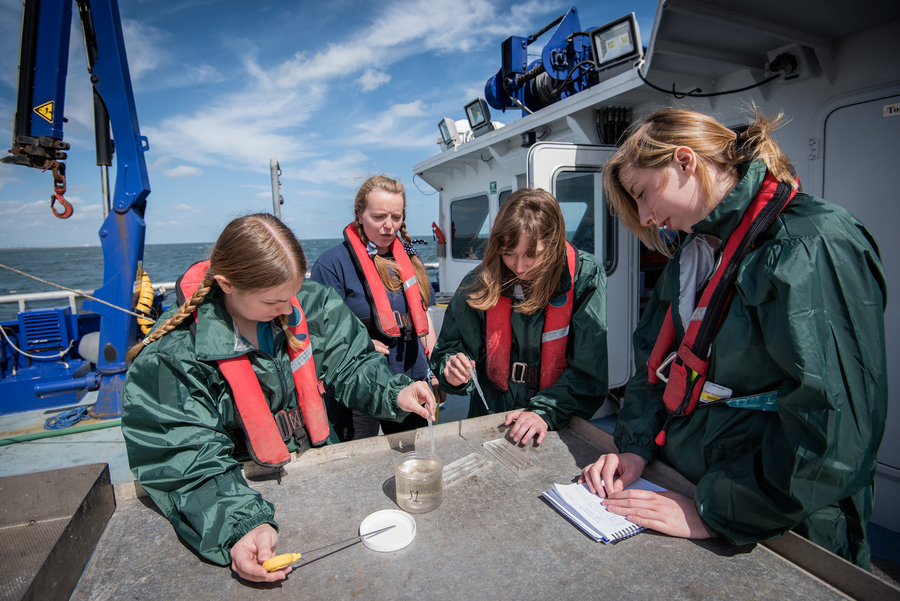Collaborative Research: How Robotics and Humans Work Together to Advance Marine Science
by Lorraine McCarthy in Marine Research
Posted on Sunday, May 14, 2023 at 10:47
Marine research is a complex and challenging field that requires a diverse set of skills and expertise. While robots are increasingly being used for autonomous data collection in marine environments, human researchers remain essential to the process. By working together, robotics and human researchers can achieve more accurate and comprehensive results than either could achieve alone. In this post, we'll explore how robotics and humans collaborate to advance marine science.
Robotic platforms have revolutionised marine research by enabling scientists to collect large amounts of data quickly and efficiently. These platforms can operate autonomously for weeks or months at a time, collecting data on everything from ocean currents to marine life populations. The data collected by these robots can be used to answer important scientific questions and inform management decisions. However, robots are not a substitute for human researchers. While robots are excellent at collecting data, they lack the ability to analyze it and interpret the results. This is where human researchers come in.
One way that robotics and humans collaborate in marine research is through the use of remote sensing technology. Remote sensing allows researchers to collect data from a distance using instruments like cameras, sonar, and lasers. This technology can be used to map seafloor habitats, track marine life, and monitor water quality. However, interpreting this data requires human expertise. Human researchers can use their knowledge of marine ecology and physiology to interpret the data collected by robots and identify patterns and trends.
Another way that robotics and humans collaborate in marine research is through the use of citizen science programs. Citizen science involves enlisting the help of volunteers to collect data and conduct research. In marine research, citizen science programs can be used to collect data on marine life populations, monitor water quality, and track the movement of ocean currents. The data collected by citizen scientists can be analysed by human researchers to answer important scientific questions. This approach not only helps to advance marine science, but it also helps to engage the public in science and conservation.
Finally, robotics and human researchers can collaborate through the use of hybrid systems. Hybrid systems are robotic platforms that are operated by humans. These systems combine the efficiency and precision of robots with the expertise and decision-making abilities of human researchers. Hybrid systems can be used to collect data in complex marine environments, such as near shorelines or in areas with strong currents. The human operator can make real-time decisions about where to deploy the robot and what data to collect, while the robot itself can collect data in a more precise and efficient manner than a human diver could.
Overall, robotics and humans work together to advance marine science in a variety of ways. By combining the strengths of both, we can collect more accurate and comprehensive data, interpret that data more effectively, and make better decisions about how to manage our marine resources. As technology continues to advance, we can expect to see even more exciting and innovative collaborations between robotics and humans in the field of marine research.
Search
Upcoming Missions
- Galway Bay Loop, Waiting for Vessel Availability
Recent Posts
- May 2023 (1 post)
- April 2023 (1 post)
- March 2023 (1 post)
- February 2023 (2 posts)
- March 2022 (3 posts)
- March 2021 (1 post)
- August 2020 (1 post)
- May 2019 (1 post)
- April 2018 (1 post)
- November 2017 (1 post)
- April 2017 (1 post)
- November 2016 (1 post)
- September 2016 (1 post)
- August 2016 (1 post)
- January 2014 (2 posts)
- October 2013 (7 posts)
- September 2013 (1 post)
- August 2013 (3 posts)
- June 2013 (3 posts)
- May 2013 (4 posts)
- April 2013 (3 posts)
- March 2013 (9 posts)
- February 2013 (8 posts)
